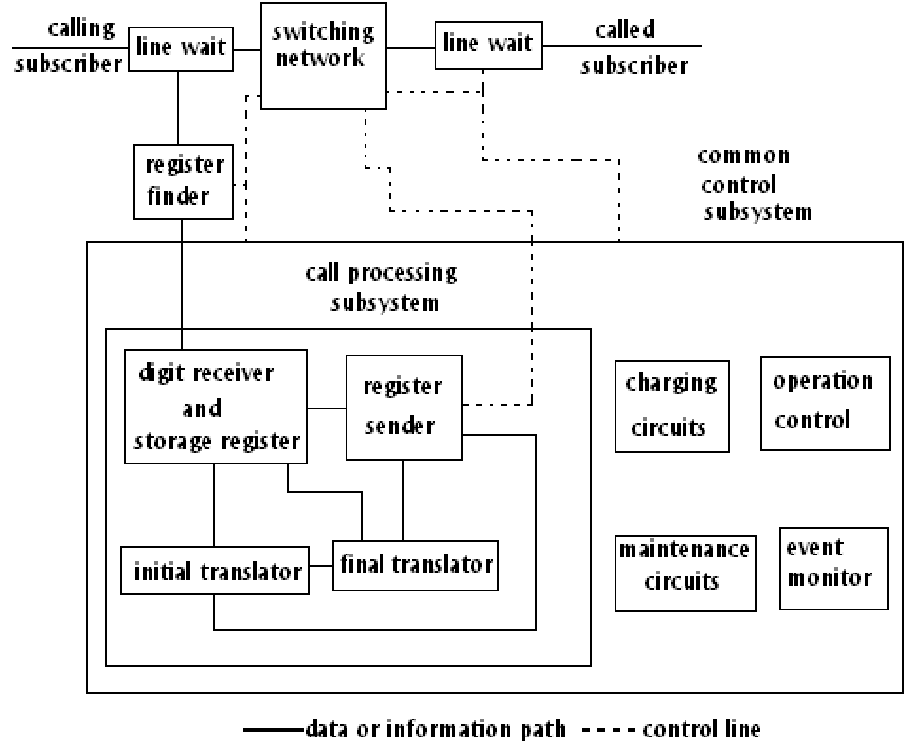How different control function categories help in signalling and control.
Events happening outside the exchange on the line units, trunk junctions and inter exchange signaling receiver/sender units are monitored through control subsystem. Classical events include all requests and call release signals at the line units. The incidence of the events is signaled by operating relays that initiate control action. The control subsystems may functions relays in the junctions, receivers/senders and the line units, and therefore command these units to perform specific functions. The monitoring of events may be distributed. For illustrations, the line units themselves may start control actions on the occurrence of specific line events.
If a subscriber goes off-hook, the event is sensed, the calling location is found and market for dial tone and the register finder is activated to seize a free register. Individuality of the calling line is used to find out the line category and the class of service to that the subscriber belongs. A register suitable to the line category is chosen, that then sends out the dial tone to the subscriber, into readiness to receive the dialing information. Immediately the initial digits (as usually 2 to 5) that identify the exchange are received in the register, the register continues to receive remains digits.
The initial translator finds out the route for the call by the network and decides whether a call must be put through or not. This also determines the charging way and the rates applicable to the subscriber. First translation may also take in account instructions from the operating personnel and information about the status of the network.

FIG - Common Control Switching System
When a call is destined to a number in an exchange other than there one processing the digits, the initial translator generates the requirement routing digits and passes all them on to the register sender. Now the digits equivalent to the subscriber identification is concatenated and the combined digit pattern is transmitted over the trunks to the external exchange. Register sender utilizes suitable signaling technique, depending upon the requirements of the destination exchange. When the call is destined to a subscriber inside the similar exchange, the digits are processed through the final translator. The translation of directory number to equipment number takes place at such stage. The last translator determines the line till to which a call should be connected and the category of the called line. The category information may affect charging and connection establishment. In several practical implementations, both first and last code translator functions are performed through a single translator.
Controlling the operation of the switching network is a significant function of the common control subsystem. It is done by marking the switching elements at various stages in accordance with a set of binary data defining the path and after that commanding the actual connection of the path. Path determining may be carried out at the level of the switching network or the common control unit.
When a call is destined to a number in an exchange other than there one processing the digits, the initial translator generates the requirement routing digits and passes all them on to the register sender. Now the digits equivalent to the subscriber identification is concatenated and the combined digit pattern is transmitted over the trunks to the external exchange. Register sender utilizes suitable signaling technique, depending upon the requirements of the destination exchange. When the call is destined to a subscriber inside the similar exchange, the digits are processed through the final translator. The translation of directory number to equipment number takes place at such stage. The last translator determines the line till to which a call should be connected and the category of the called line. The category information may affect charging and connection establishment. In several practical implementations, both first and last code translator functions are performed through a single translator.
Controlling the operation of the switching network is a significant function of the common control subsystem. It is done by marking the switching elements at various stages in accordance with a set of binary data defining the path and after that commanding the actual connection of the path. Path determining may be carried out at the level of the switching network or the common control unit.